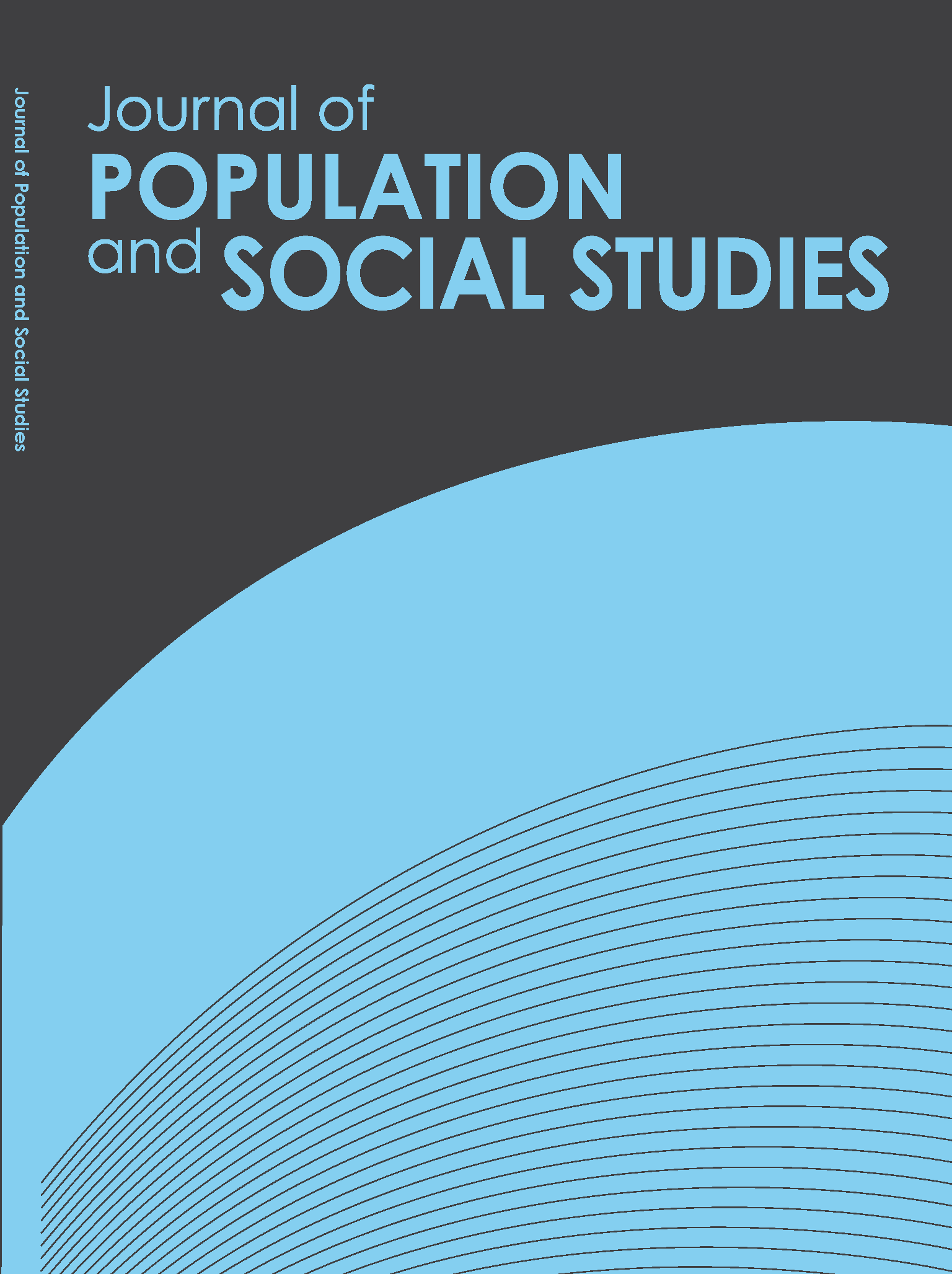Factors Associated with Perceived Psychosocial Problems and Help-Seeking Practices among Adolescents in Nepal
Main Article Content
Abstract
Adolescents' psychosocial problems are a growing public health concern in both developed and developing countries. Research on this subject is limited in low- and middle-income countries. This paper examines the national scenario for psychosocial problems among adolescents in Nepal using data from the Nepal Adolescents and Youth Survey (NAYS) 2010/11. Findings suggest that approximately 14% of adolescents are suffering from at least one type of psychosocial problem. Common predictors of such problems are female gender, older age and the past experience of physical violence. These problems give rise to anxious feelings, restlessness, hopelessness and suicidal thoughts, yet only a small proportion (21.2%) of adolescents sought help for their problems. This low proportion suggests that adolescents' psychosocial problems deserve greater attention from the government and non-governmental sectors.
Article Details
References
Abdulmalik, J. O. & Sale, S. (2012). Pathways to psychiatric care for children and adolescents at a tertiary facility in northern Nigeria. Journal of Public Health in Africa, 3(1), e4. doi: http://dx.doi.org/10.4081/jphia.2012.e4
Adhikari, R. K., Sherchand, J. B., Mishra, S. R., Ranabhat, K., Pokharel, A., Devkota, P., . . . Wagle, R. R. (2015). Health-seeking behaviors and self-care practices of people with filarial lymphoedema in Nepal: A qualitative study. Journal of Tropical Medicine, 2015, 1-6. doi: http://dx.doi.org/10.1155/2015/260359
Ahmad, A., Khalique, N., Khan, Z. & Amir, A. (2007). Prevalence of psychosocial problems among school going male adolescents. Indian Journal of Community Medicine, 32(3), 219-221. doi: http://dx.doi.org/10.4103/0970-0218.36836
Atilola, O., Balhara, Y. P. S., Stevanovic, D., Avicenna, M. & Kandemir, H. (2013). Self-reported mental health problems among adolescents in developing countries: Results from an international pilot sample. Journal of Developmental & Behavioral Pediatrics, 34(2), 129- 137. doi: http://dx.doi.org/10.1097/dbp.0b013e31828123a6
Central Bureau of Statistics. (2012). National population and housing census 2011. Kathmandu, Nepal: Central Bureau of Statistics.
Chhabra, G. S. & Sodhi, M. K. (2012). Impact of family conflict on the psychosocial behaviour in male adolescents. Journal of Nepal Paediatric Society, 32(2), 124-131. doi: http://dx.doi.org/10.3126/jnps.v32i2.6147
Cortina, M. A., Sodha, A., Fazel, M. & Ramchandani, P. (2012). The prevalence of child mental health problems in sub Saharan Africa: A systematic review. Archives of Pediatrics & Adolescent Medicine, 166(3), 276-281. doi: http://dx.doi.org/10.1001/archpediatrics.2011.592
Fleitlich, B. & Goodman, R. (2001). Social factors associated with child mental health problems in Brazil: Cross sectional survey. BMJ, 323, 599-600. doi: http://dx.doi.org/10.1136/bmj.323.7313.599
Kessler, R. C., Berglund, P., Demler, O., Jin, R., Merikangas, K. R. & Walters, E. E. (2005). Lifetime prevalence and age‐of‐onset distributions of DSM‐IV disorders in the National Comorbidity Survey Replication. Archives of General Psychiatry, 62, 593-602. doi: http://dx.doi.org/10.1001/archpsyc.62.6.593
Kieling, C., Baker-Henningham, H., Belfer, M., Conti, G., Ertem, I., Omigbodun, O., . . . Rahman, A. (2011). Child and adolescent mental health worldwide: Evidence for action. The Lancet, 378(9801), 1515-1525. doi: http://dx.doi.org/10.1016/s0140-6736(11)60827-1
Kohrt, B. A., Jordans, M. J. D., Tol, W. A., Perera, E., Karki, R., Koirala,
S. & Upadhaya, N. (2010). Social ecology of child soldiers: Child, family, and community determinants of mental health, psychosocial well-being, and reintegration in Nepal. Transcultural Psychiatry, 47(5), 727-753. doi: http://dx.doi.org/10.1177/1363461510381290
Kohrt, B. A., Jordans, M. J. D., Tol, W. A., Speckman, R. A., Maharjan, S. M., Worthman, C. M. & Komproe, I. H. (2008). Comparison of mental health between former child soldiers and children never conscripted by armed groups in Nepal. JAMA, 300(6), 691-702. doi: http://dx.doi.org/10.1001/jama.300.6.691
Kohrt, B. A., Speckman, R. A., Kunz, R. D., Baldwin, J. L., Upadhaya, N., Acharya, N. R., . . . Worthman, C. M. (2009). Culture in psychiatric epidemiology: Using ethnography and multiple mediator models to assess the relationship of caste with depression and anxiety in Nepal. Annals of Human Biology, 36(3), 261 280. doi: http://dx.doi.org/10.1080/03014460902839194
Ministry of Health and Population (2012). Nepal adolescents and youth survey. Kathmandu, Nepal: Ministry of Health and Population.
Moilanen, L. K., Shaw, D. S. & Maxwell, K. L. (2010). Developmental cascades: Externalizing, internalizing, and academic competence from middle childhood to early adolescence. Development and Psychopathology, 22(3), 635-653. doi: http://dx.doi.org/10.1017/s0954579410000337
Murray, C. J., Vos, T., Lozano, R., Naghavi, M., Flaxman, A. D., Michaud, C., . . . Abdalla, S. (2013). Disability-adjusted life years (DALYs) for 291 diseases and injuries in 21 regions, 1990–2010: A systematic analysis for the Global Burden of Disease Study 2010. The Lancet, 380(9859), 2197-2223.
National Human Rights Commission. (2008). Status of child rights in Nepal: Annual report 2008. Harihar Bhawan Lalitpur, Nepal: National Human Rights Commission
O’Connor, P. J., Martin, B., Weeks, C. S.,& Ong, L. (2014). Factors that influence young people’s mental health help-seeking behaviour: A study based on the Health Belief Model. Journal of Advanced Nursing, 70(11), 2577-2587. doi: http://dx.doi.org/10.1111/jan.12423
Patel, V., Flisher, A. J., Hetrick, S. & McGorry, P. (2007). Mental health of young people: A global public-health challenge. The Lancet, 369, 1302-1313. doi: http://dx.doi.org/10.1016/s0140-6736(07)60368-7
Reed, R. V., Fazel, M., Jones, L., Panter-Brick, C. & Stein, A. (2012). Mental health of displaced and refugee children resettled in low-income and middle-income countries: Risk and protective factors. The Lancet, 379(9812), 250-265. doi: http://dx.doi.org/10.1016/s0140-6736(11)60050-0
Ribeiro, W. S., Andreoli, S. B., Ferri, P. C., Martin Prince, M. & Mari, J. D. S. (2009). Exposure to violence and mental health problems in low and middle-income countries: A literature review. Revista Brasileira de Psiquiatria, 31(Supp II), S49-57.
Saxena, S., Jane-Llopis, E. & Hosman, C. (2006). Prevention of mental and behavioural disorders: Implications for policy and practice. World Psychiatry, 5(1), 5-14.
Srinath, S., Kandasamy, P. & Golhar, S. J. (2010). Epidemiology of child and adolescent mental health disorders in Asia. Current Opinion in Psychiatry, 23(4), 330-336. doi: http://dx.doi.org/10.1097/yco.0b013e32833aa0c1
United Nations Office of the High Commissioner for Human Rights. (2012). Nepal conflict report 2012: An analysis of conflict-related violations of international human rights law and international humanitarian law between February 1996 and 21 November 2006. Geneva: United Nations Office of the High Commissioner for Human Rights.
WHO. (2009). Mental health systems in selected low- and middle-income countries: A WHO-AIMS cross-national analysis. Geneva: World Health Organization.
WHO. (2014). Preventing suicide: A global imperative. Geneva: World Health Organization.


